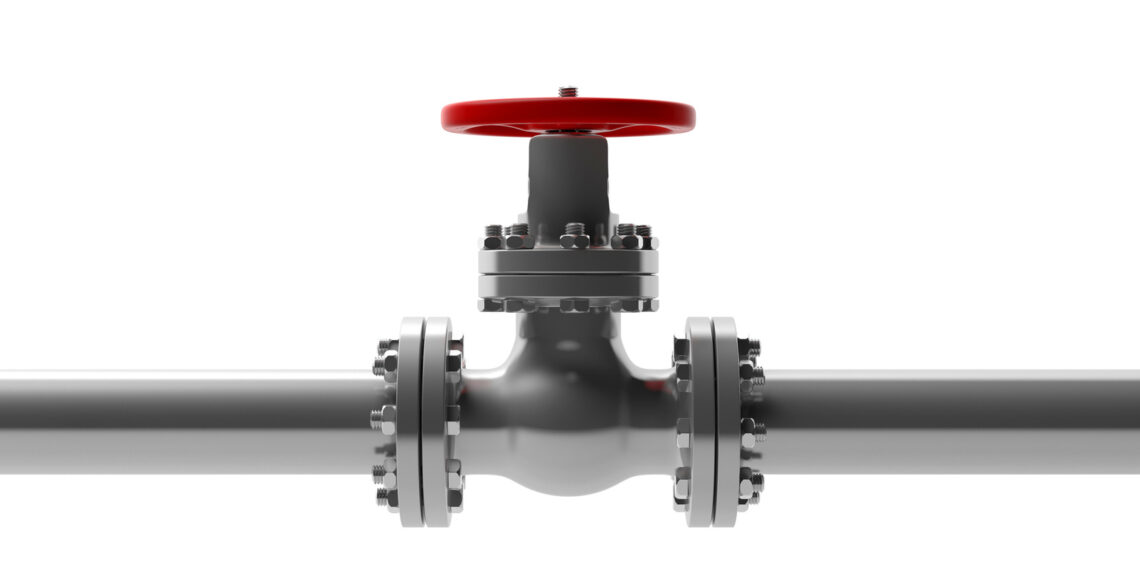There are numerous valve types which various industries use in a wide range of applications. However, even though there are many, we’ll focus on five that industries use most often.
Some valves are elemental in their design, while others are more complex to varying degrees. Whatever the case, flow control valves do a similar job in controlling the pressure of liquids or air for different purposes.
So now, let’s run through five common flow control valve types, so you know what’s available.
Table of Contents
Gate Valves
Gate valves act as non-throttling, on and off valves that industries use for general service flow control. The types include wedge-shaped and parallel gate valves.
Engineers use these valves in applications that need fluid to flow in a straight line with the least amount of restriction possible. Engineers may also use a gate valve when they require free bore or minimum pressure loss.
You can use a gate valve to control the flow of wastewater, potable water, and neutral substances. Yet, they can handle many other liquid types.
Globe Valves
Globe valves are a linear motion type that regulates the flow of liquids. They can stop and start the flow as well.
You can use a globe valve are for on and off and throttling applications. Yet, unlike straight-through valves, globe valves can produce more significant pressure drops. This is because you can altogether remove or close the valve’s disk from the flow stream.
Pinch Valves
Pinch valves are a form of hydraulic flow control valves that are inexpensive and widely used in the industry.
Flexible parts such as rubber tubes seal them and are the only wet portion in a pinch valve. They help the valves snugly seal around entrapped solids due to their flexibility. This makes them ideal for liquids containing a substantial amount of suspended particulates.
Diaphragm Valves
Diaphragm valves have a flexible disc that produces a seal when it contacts a cushion at the top of the valve body. The diaphragm is pliable and responsive to pressure.
They are very clean, have a leak-proof seal, a tight shut-off, are simple to maintain, and decrease environmental leakage. You can also fix diaphragm valves without disrupting a pipeline.
Needle Valves
Needle valves are flow-restricting volume control valves for small lines. They have a few design traits in common with globe valves, and they provide similar benefits.
The precision that needle valves can accomplish is what distinguishes them from globe valves. Since needle valves can be fine-tuned, they are an excellent choice for calibrating applications.
Know Your Flow Control Valves
We’ve just touched upon some of the most popular flow control valves that engineers and industry use today. And of course, there are many technical aspects to each one that you can explore for yourself.
If you find the post useful, please check out our blog for other informative reads.

